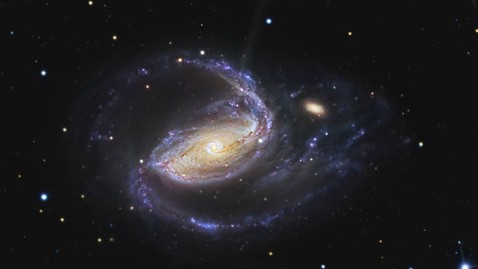Two Largest Black Holes in Universe Discovered
A team of scientists at the University of California at Berkeley has found the two largest black holes known to exist. Each hole is 10 billion times larger than our sun.
A team of eight led by Chung-Pei Ma, a professor of astronomy at Berkeley, discovered the holes in two of the largest galaxies, 300 million light years away. The findings were published in an article in the journal Nature.
The previous black hole record-holder is 6 billion times the size of our sun. It was discovered 33 years ago by Wallace Sargent at the California Institute of Technology in galaxy M87.

A black hole is formed by the collapse of a super-size star. It’s a region where nothing, not even light, can escape.
“I would think of a black hole as a monster lurking in space that you cannot see but it’s capable of sucking in material if you go really close to it. It’s a region in the universe with the strongest gravity,” Ma told ABC News.
Typically, when two galaxies merge, they form a bigger galaxy and their black holes merge to form a bigger black hole.
“I’m very excited right now because I think learning about these black holes will tell us about how the galaxies were formed. We think they were formed when their parent galaxies were formed,” said Ma. “I’m just very curious to know how these black holes got so monstrous. This is an enormous amount of mass in a very small space.”
Ma and her team have data for other galaxies, and in the future plan to analyze the data to find other black holes.